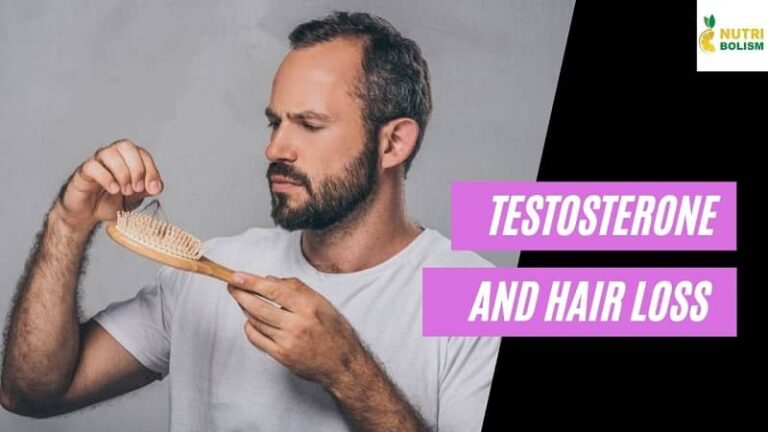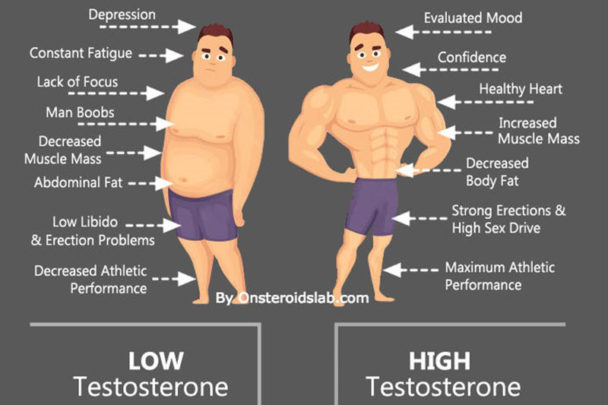Table Of Content

As a result, doctors have theorized that lower testosterone levels could contribute to affected memory. It is not known how many people get the drug for hair loss on a private prescription but some clinics have reported an increase. It is only licensed by the MHRA for hair loss in 18 to 41-year-olds, and the treatment of enlarged prostates. It works by stopping the sex hormone testosterone from turning into another hormone called dihydrotestosterone (DHT), which can cause the prostate to grow, and hair to fall out. Though testosterone is essential to the health and well-being of all bodies, there is limited research on its supplementation in females. Early research has shown some benefits of low dose testosterone therapy include postmenopausal care, gender affirming care, and more.
What should a woman’s testosterone level be?
Physicians commonly prescribe two different types of medications to help treat hair loss caused by testosterone imbalance and abnormal levels of DHT. Unfortunately, due to their differences in physiology, there are several possibilities as to why men may experience hair loss differently. In this article, we will explore the potential causes of male hair loss and the various treatment options men have available to restore their hair to its former glory. By the time they reach 35, over 85% of men in the United States will experience a significant amount of hair loss. In some cases, even younger men between the ages of 16 and 29 may also find their hair thinning prematurely, indicating that the aging process may not always cause hair loss. For every man suffering from hair loss, this phenomenon can prompt many to question their body composition and the source of this unwanted transition.
Types of Baldness in Men
Urologist Lawrence S. Hakim, MD, debunks some of the myths and helps answer some of your most burning questions. Your body converts about 10% of the testosterone you produce into DHT via an enzyme called 5 alpha-reductase, notes the Society for Endocrinology. By age 50, up to half of men start to lose hair along their temples, crown, and hairline (1). Less than 15% of men still sport their full head of hair at age 70.

How else does smoking affect health?
About 10 percent of testosterone in all adults is converted to DHT with the help of an enzyme called 5-alpha reductase (5-AR). All of our content is written by people with a strong science background, including medical researchers. Most cases of low testosterone are treatable, and being aware of the symptoms can help a person receive an early diagnosis and treatment. A primary care physician may refer an individual to a urologist, who specializes in diseases of the male reproductive system, or to an endocrinologist who specializes in hormone-related diseases. While changes to the lifestyle and diet alone may not raise levels sufficiently, they can often help. However, anyone who experiences one or more of the above symptoms should seek medical attention.
Female hair loss causes may include an excess or lack of some hormones you might not expect — like testosterone. Treatment for low testosterone can be controversial because low testosterone in women and people AFAB hasn’t been well-studied. The U.S. Food and Drug Administration (FDA) hasn’t approved any testosterone treatments currently. As there isn’t a standard for treatment, providers treat low testosterone in women the same way they’d treat it in men. This can be problematic because women and people AFAB require significantly less testosterone (a much lower dose of medication) than men and people AMAB. On the other hand, changes in the body that occur as a result of sleep apnea can lead to low testosterone levels.
What lifestyle changes can help me avoid prostate cancer?
When androgen levels increase in the body, the production of DHT in the 5-alpha reductase enzyme rises, which can be a risk factor for patients genetically susceptible to hair loss. The DHT binds to the hair follicle, causing them to weaken and accelerating the hair-thinning process. As such, increasing testosterone levels in the body does not cause hair loss, but it can accelerate the process already in motion. Testosterone replacement therapy may be effective for patients with these conditions and can be administered in several ways, including injections, pellets, creams, and patches.
Depending on the cause of their hair loss, they may also be referred to experts like a dermatologist, a trichologist, or an endocrinologist for treatment. If a person notices these symptoms, they should speak with a doctor. A doctor can then come up with a treatment plan to increase their testosterone levels.
What are the symptoms of low testosterone?
6 Strange Warning Signs of Low Testosterone - Everyday Health
6 Strange Warning Signs of Low Testosterone.
Posted: Fri, 31 Jul 2015 07:00:00 GMT [source]
However, the testosterone level does not determine how sensitive the hair follicle is to DHT. Some patients genetically have a higher sensitivity to DHT, meaning high levels of DHT can accelerate the hair loss process. For men with low T symptoms such as hair loss, testosterone replacement therapy (TRT) is a viable option to help boost their testosterone levels and stimulate hair growth. In addition, by using TRT to replenish their low testosterone, men can prevent the symptoms of low testosterone and other related medical conditions that can contribute to their hair loss, such as diabetes.
For many men, the most common cause of hair loss stems from their genetics as they age. Typically, men who have family members with a history of hair loss or baldness are more likely to experience hair loss themselves. Usually, this form of hair loss in men starts with a receding hairline (frontal baldness) as hair from the top of the head also begins to fall.
As men age, testosterone production naturally decreases and can affect body and facial hair growth. Still, researchers have not found a link between low testosterone levels and hair loss on the crown of the head. While low testosterone levels may correlate to less DHT being produced, the primary cause of hair loss is a genetic sensitivity to the binding of DHT to the hair follicles. High testosterone levels in male and female patients can contribute to increased production of DHT, which can accelerate hair thinning for genetically predisposed people. While that is the case, testosterone levels can still affect many aspects of the female body, including muscle mass, bone density, menstruation cycle, and sex drive. However, there is no correlation between low testosterone levels and hair loss in females.
The most common DHT blockers that physicians have found effective against hormonal hair loss are Minoxidil and Finasteride. Malnutrition and particular daily habits can also contribute to hair loss. Physical complications such as rapid weight loss or weight gain can also lead to certain deficiencies that can cause hair loss. Other lifestyle choices, such as daily alcohol consumption and smoking regularly, have also been shown to accelerate male pattern baldness. Low testosterone levels in males can lead to erectile dysfunction. They can also affect sleep, mood, the size of the testicles, and more.
But at this time, research into the effect of low testosterone in females is limited and there are no conclusive guidelines for what should be considered “low” testosterone levels in females. After many clinical studies, scientists have found that in most cases, this DHT sensitivity is a genetic condition that can be traced back through the men in your family. Naturally, that means if other men in your family have a high sensitivity to DHT and have experienced hair loss, you have a much higher chance of experiencing hair loss yourself. Most men with close family relatives that are currently balding may cringe at the thought of being genetically imprisoned to the possibility of losing their hair in the future.
Dihydrotestosterone is the form of testosterone primarily responsible for hair loss. A doctor can check your testosterone level with a simple blood test. Since testosterone influences many of the body’s physical processes, it can also influence mood and mental capacity. Low dose testosterone may also allow for gradual physical changes, giving individuals time to assess the effects before deciding on further treatment.


No comments:
Post a Comment